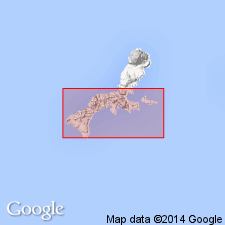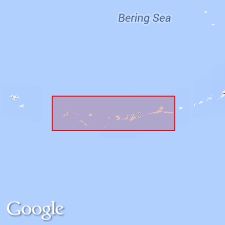
- Usage in publication:
-
- Kiska Harbor formation*
- Modifications:
-
- Named
- Dominant lithology:
-
- Breccia
- Pyroclastics
- Volcanics
- Sand
- Conglomerate
- AAPG geologic province:
-
- Aleutian Islands province
- Alaska Southwestern region
Summary:
Type section (pyroclastic facies) designated on bluff north of Trout Lagoon at head of Kiska Harbor; type section (lava flow facies) designated in Sredi Point, Kiska Island, Rat Island group, Aleutian Islands, AK. Unit occupies about 30 sq mi in north-central part of Kiska Island. Also outcrops on Little Kiska Island. Consists of subaerial lava flows, autoclastic breccias, pyroclastic rocks, and water-laid pumiceous sand and conglomerate. Lava flows predominate in north and water-laid beds in south. Unconformably overlies Vega Bay formation (new) on south; on north underlies rocks of Kiska Volcano and alluvium. Is probably late Tertiary or early Pleistocene age based on stratigraphic relations and correlation.
Source: GNU records (USGS DDS-6; Menlo GNULEX).

- Usage in publication:
-
- Kiska Harbor Formation*
- Modifications:
-
- Age modified
- Geochronologic dating
- AAPG geologic province:
-
- Alaska Peninsula province
- Alaska Southwestern region
Summary:
Age is late Miocene based on 5.5 Ma isotopic age.
Source: GNU records (USGS DDS-6; Menlo GNULEX).
For more information, please contact Nancy Stamm, Geologic Names Committee Secretary.
Asterisk (*) indicates published by U.S. Geological Survey authors.
"No current usage" (†) implies that a name has been abandoned or has fallen into disuse. Former usage and, if known, replacement name given in parentheses ( ).
Slash (/) indicates name conflicts with nomenclatural guidelines (CSN, 1933; ACSN, 1961, 1970; NACSN, 1983, 2005, 2021). May be explained within brackets ([ ]).

